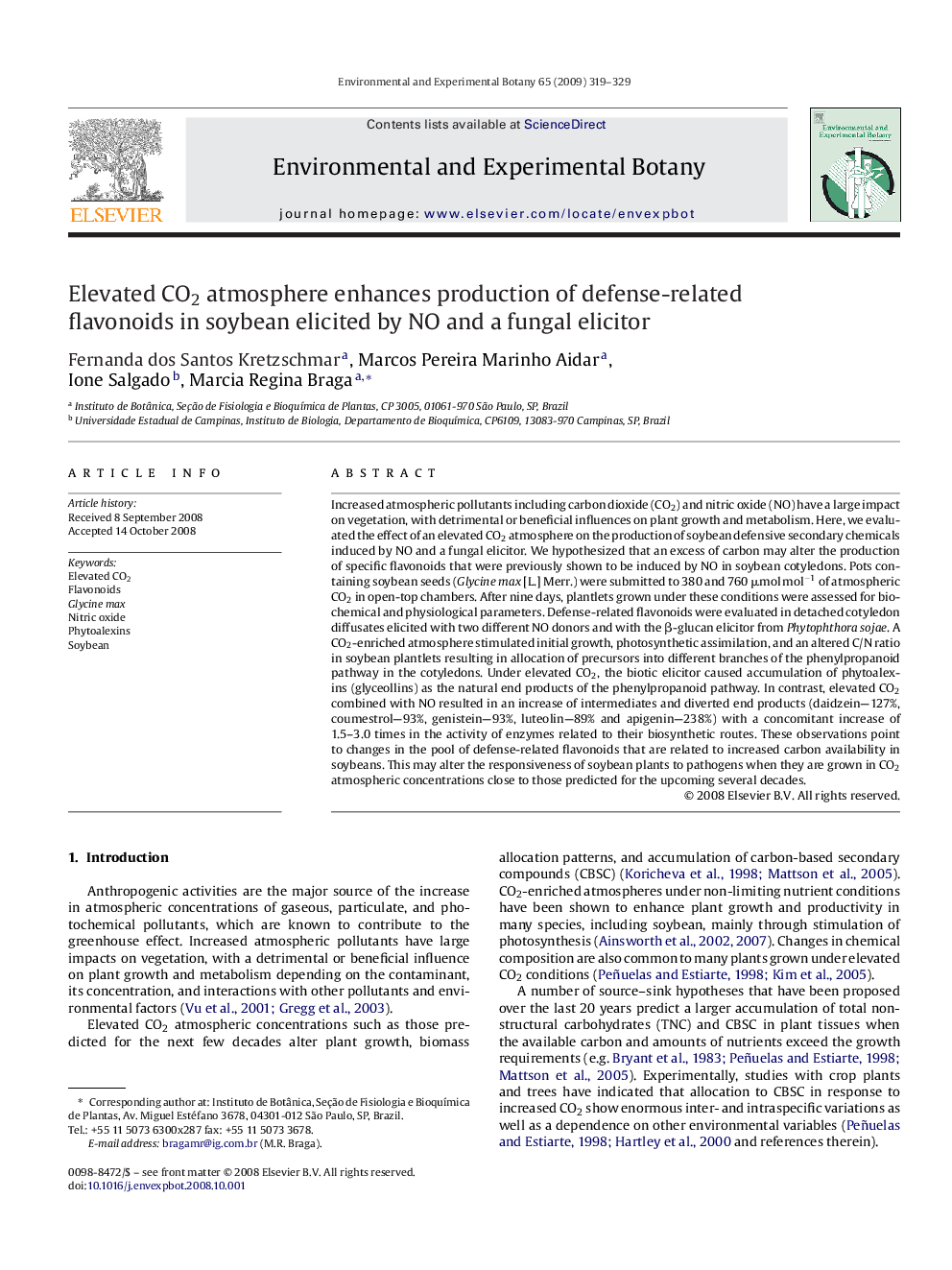| کد مقاله | کد نشریه | سال انتشار | مقاله انگلیسی | نسخه تمام متن |
|---|---|---|---|---|
| 4555232 | 1628106 | 2009 | 11 صفحه PDF | دانلود رایگان |

Increased atmospheric pollutants including carbon dioxide (CO2) and nitric oxide (NO) have a large impact on vegetation, with detrimental or beneficial influences on plant growth and metabolism. Here, we evaluated the effect of an elevated CO2 atmosphere on the production of soybean defensive secondary chemicals induced by NO and a fungal elicitor. We hypothesized that an excess of carbon may alter the production of specific flavonoids that were previously shown to be induced by NO in soybean cotyledons. Pots containing soybean seeds (Glycine max [L.] Merr.) were submitted to 380 and 760 μmol mol−1 of atmospheric CO2 in open-top chambers. After nine days, plantlets grown under these conditions were assessed for biochemical and physiological parameters. Defense-related flavonoids were evaluated in detached cotyledon diffusates elicited with two different NO donors and with the β-glucan elicitor from Phytophthora sojae. A CO2-enriched atmosphere stimulated initial growth, photosynthetic assimilation, and an altered C/N ratio in soybean plantlets resulting in allocation of precursors into different branches of the phenylpropanoid pathway in the cotyledons. Under elevated CO2, the biotic elicitor caused accumulation of phytoalexins (glyceollins) as the natural end products of the phenylpropanoid pathway. In contrast, elevated CO2 combined with NO resulted in an increase of intermediates and diverted end products (daidzein—127%, coumestrol—93%, genistein—93%, luteolin—89% and apigenin—238%) with a concomitant increase of 1.5–3.0 times in the activity of enzymes related to their biosynthetic routes. These observations point to changes in the pool of defense-related flavonoids that are related to increased carbon availability in soybeans. This may alter the responsiveness of soybean plants to pathogens when they are grown in CO2 atmospheric concentrations close to those predicted for the upcoming several decades.
Journal: Environmental and Experimental Botany - Volume 65, Issues 2–3, March 2009, Pages 319–329